
Volkswagen Tiguan Allspace (2017-2024) long-term test


Welcome to the Parkers long-term test of the Volkswagen Tiguan Allspace, in which we’ll be finding out just how practical a seven-seater SUV actually is for a young family.
Reports by CJ Hubbard
Jump to:
- Introduction
- Practicality and interior space
- What it’s like to drive
- The biggest issue so far
- Comfort on longer trips
- Final report: would we buy one?
Report 1: Enter the family wagon, what-people-actually-buy edition
Meet the new horse
This Tiguan Allspace is my third Volkswagen long-term test vehicle on the bounce, and I feel like I’ve gradually been working my way towards more traditional family car fodder.
Having started with an all-electric VW ID.4, then transferred into a bus-like Multivan powered by a turbocharged petrol engine, I now find myself with the keys to a mid-size diesel SUV. In other words, the kind of vehicle many modern families would put as first choice.
So it’s going to be interesting to see over the course of a few months and several thousand miles if it really does suit my young family as well or better than the VW Multivan in particular.
What’s the spec?
With its smart Kings Red metallic paint, the exterior design hides this Allspace’s seven-seater bulk so well that I thought I’d been sent a regular Tiguan by mistake and had to go hunting for the additional seats under the boot floor. I still can’t spot another one from the outside until I get close enough to see the Allspace badge. Perhaps it’s my age, but that seems quite the achievement.
Ours is a refreshingly entry-level Life model with the most basic 150hp 2.0-litre TDI motor, a six-speed manual gearbox and front-wheel drive.
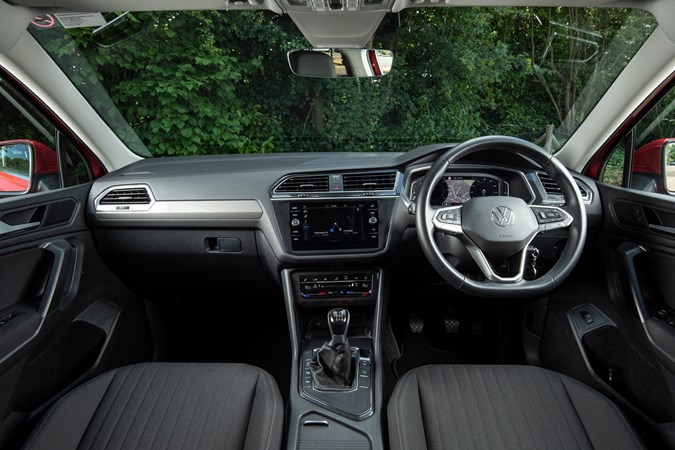
It’s still got nearly £5,000-worth of options on it, however. Most expensive of which is the opening panoramic sunroof at £1,270; this doesn’t seem to represent any major headroom issues, and the kids love it, so could well be money well spent.
More practical features include the Winter Pack – adding heated front seats, heated washer jets and heated steering wheel – the rear parking camera and tyre pressure monitors that show individual pressures. There’s also a proper spacesaver spare wheel, heated, electrically folding door mirrors and some towing equipment.

Highlights among the standard kit include three-zone air-conditioning, fitted sat-nav (although I’ll mostly be using Android Auto, which is also included alongside Apple CarPlay), plenty of USB ports and 12v sockets (though not as many of the former as the Multivan), LED exterior lighting and cloth upholstery over comfort seats.
The Tiguan Allspace Life also rolls on the smallest 18-inch wheel option in the line-up, which promises a smooth ride.
Do first impressions count?
Yes, but I don’t want to make any snap judgements. For instance, compared with the Multivan, the interior comes across as cramped and loading in the child seats was more awkward. But since most Allspace buyers are unlikely to be stepping out of a van-sized MPV with sliding side doors into one of these, that’s more of a me problem than an issue with the Tiguan.
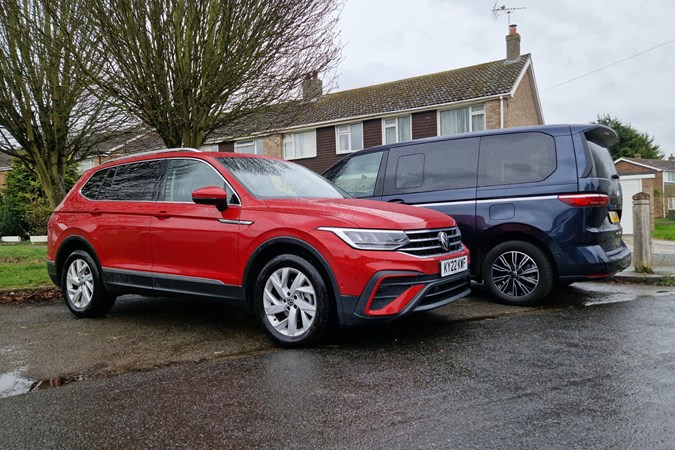
One initial reaction that I don’t think will be going anywhere, however, is my dismay at the lack of keyless entry. I’d much rather have this than a powered tailgate – a feature that is standard – as it saves the pain of fishing the keys out while trying to herd the kids into safe harbour in a busy carpark. Inevitably the key will always be in the least accessible pocket, too.
Much more positively, the driving experience is immediately endearing. The Tiguan feels structurally stiffer and more composed than the Multivan, ride comfort is (much) better, and the diesel engine and manual gearbox combo is delightfully perky. The 9.8sec on paper 0-62mph time doesn’t sound like much by modern standards, but with 340Nm of torque it feels keener than that.
Report 2: is the Tiguan Allspace practical enough?
How many seats do you really need for two small kids?
Funny thing about mid-size seven-seater SUVs – and a lot of other cars, actually. When a seating area is on the tight side, people have a tendency to describe it as suitable for children only. Yet smaller children require car seats, and these are often large enough to need more room than an adult.
So how does the Tiguan’s seven-seater layout cope with my family of four’s occasional need to transport three adults as well as a four-year-old and a newborn baby? Well, it requires some adaptability.
Carrying kids in the Tiguan Allspace
To clear from the start, we do have a particularly large Jane travel system for the smaller monster. The Isofix base with its monopod support is no real bother here (or in most cases), but the actual baby carrier can lay flat. This not only immediately wipes out the centre seat in the middle row, it also makes it difficult to fit the four-year-old’s chunky Cybex seat alongside it.

We resolve this by having the bigger monster travel – in her seat – in the front. As far as I can tell, unlike some cars, the Allspace can’t be specced with Isofix mounting points in the front passenger seat (this one hasn’t got it and I can’t see it in the options list). But the Cybex is designed to be used without Isofix as well, so I’m comfortable with this compromise. And my wife is happy enough in the row behind where she can keep a closer eye on the tiny kiddo.
But what happens when Grandma needs to come along as well? Fairly straightforward, in as much as my wife is small enough to fold herself into the final row of seats. However, this isn’t as comfortable for her by any means, and using the third row does inevitably have a knock effect on the boot space.

So while I can’t carry the full complement of seven people in my particular circumstances (we need six seats for five passengers, or five for four passengers, etc – but at least the rear-most row can be halved so you get that additional luggage capacity), the way to think about this is that if it wasn’t a seven-seater I wouldn’t be able to take Grandma at all.
Given there’s so little compromise in the design and I can easily get nearly 50mpg, overall this seems like a win for the Allspace to me.
And how is the bootspace…?
Ah. Well. Have to say, upon opening the boot for the first time – when hunting for the rear seats, if you recall – I was worried. The seats are certainly handy, but they make the boot floor very high, which has implications for ease of loading and the available space.
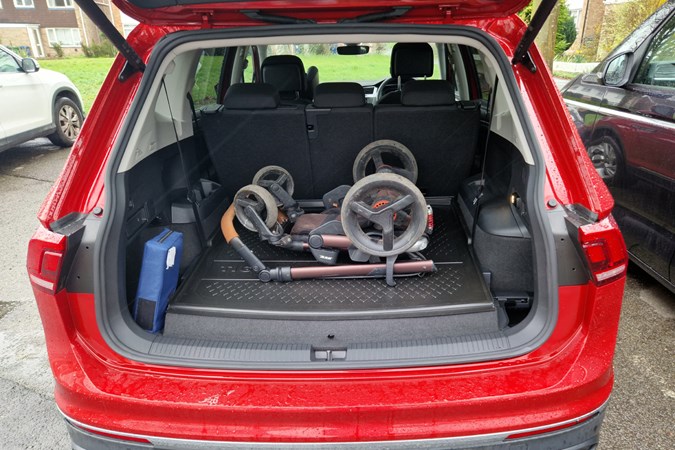
According to the spec sheet, in five-seater mode there’s 700 litres of room even so. But when I saw how much room the wheels from the travel system alone took up, my concerns started to escalate into panic. How were we going to get everything in when visiting relatives or going on holiday?
We’ll see about the later in a few weeks’ time, but for a weekend away – which requires a staggering amount of support equipment with two young children – we’ve managed relatively easily. I’ve also checked, and if needs be the buggy wheel frame can be stood upright thanks to the roof height.

Initial appearances can be deceptive, it seems – which is the whole reason we run long-term test cars, of course.
What about maximum load capacity?
I have been testing that quite often also, as we’re in the midst of moving house. In order to give our current place the best possible chance of finding a buyer in these increasingly desperate circumstances, we’ve done a great deal of decluttering.
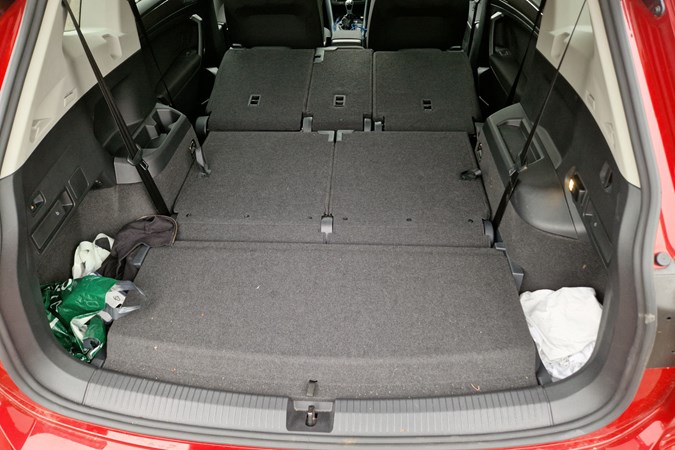
The Tiguan Allspace is hardly daunted by a tip run, but more testingly, I’ve also been moving boxes and boxes of stuff into temporary storage.
With all the passenger seats folded (and the front one can be bent in half, too), you don’t quite get a flat load floor, but you do get 1,755 litres of space, which is more than some small vans and over 100 litres greater than a five-seater Tiguan.
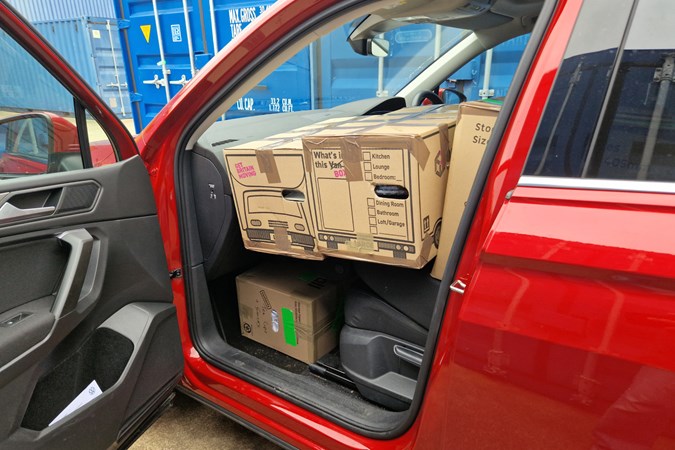
The option to cram so many boxes in the back has minimised my journeys between home and rented shipping container. Which in the generally stressful circumstances of having two tiddlers and a wife who works incredibly hard at her much-worthier-than-mine job, is a real benefit to be celebrated.
Report 3: What’s the VW Tiguan Allspace really like to drive?
It ought to be boring, but it’s actually rather good
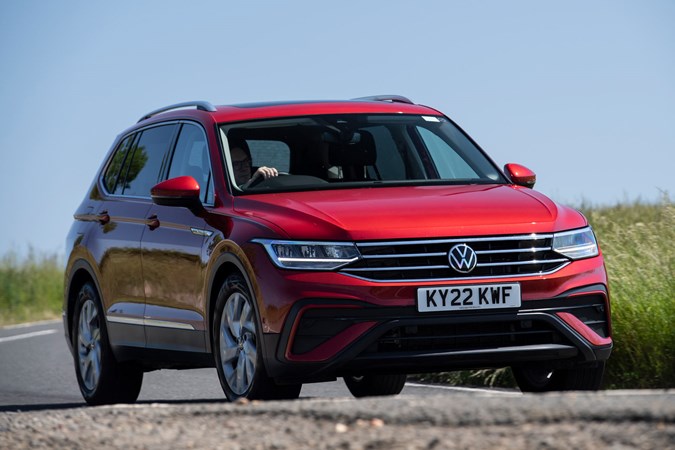
Let’s be brutally honest here: no-one gets into motoring journalism with a hankering to drive seven-seater SUVs. I am a car enthusiast, and the Tiguan Allspace was never likely to get me out of bed early on a Sunday morning, just to give it a bit of exercise.
In fact, I must confess to even mentally classifying it as… boring.
I mean, just look at it. The Allspace is handsome enough in a generically rugged sort of way but nothing about it speaks of vigour or fortitude on the open road. The best I could offer at a passing glance is that at least the chunky sidewalls on this relatively inexpensive variant suggest compliance and comfort. A perceived aptitude I’m happy to report turns out to be true – surely the last thing anyone wants is a rock-hard ride in their family bus.
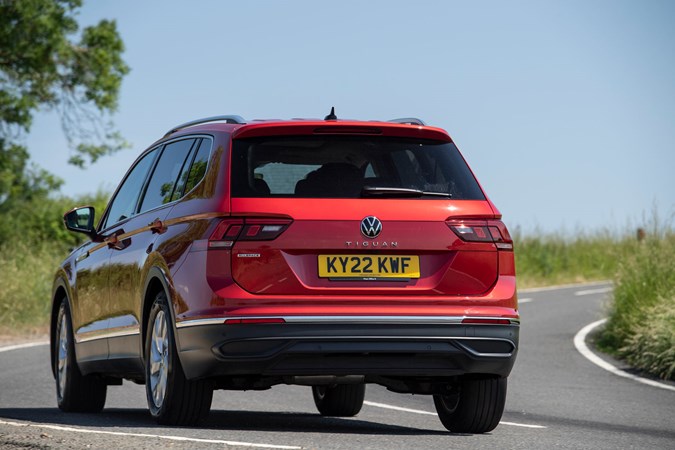
But for all that I’ve mentally given the Tiguan some yawnsville stick, the more time I spend driving this car the more I’ve started to realise something: it does almost nothing from a driver’s perspective that annoys me.
There is a large caveat to this – but it’s not directly related to the way it drives. So I’ll leave you guessing about that until a future report (…on the safety equipment).
So, what you’re saying is that it’s so dull, driving it barely registers?
No. That is absolutely not what I mean, at all.
Rather, that this vehicle is well-honed, so incredibly well prepped for purpose that I’m struggling to think of a single thing from behind the steering wheel that would put me off.
This is incredibly rare.
Let’s take the driving experience one element at a time to explore this.
The engine
All we’re dealing with here is the entry-level 2.0-litre TDI turbodiesel with 150hp. This claims 0-62mph in 9.8 seconds and a theoretical top speed of 124mph.
Hardly pulse-raising statistics, but while the latter would certainly take some time to achieve, the on-paper acceleration benchmark feels like it undersells itself a touch. I’m constantly surprised by how quickly this Tiguan can get off the line, and never find myself wishing it was faster.
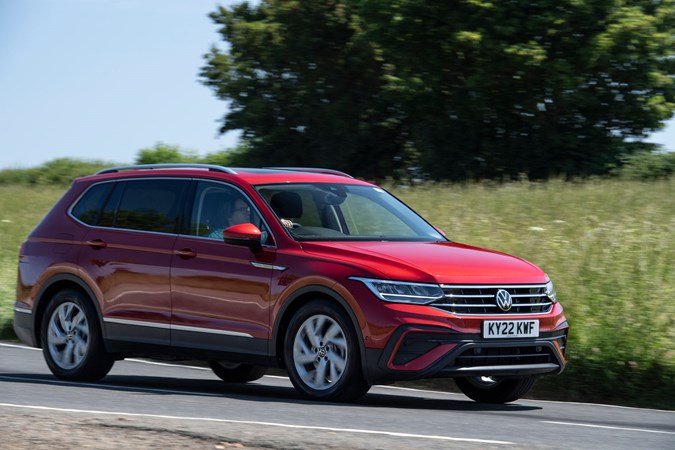
Part of that is probably the gentle way it encourages you to drive economically rather than flat to the floor, but I’m here to tell you I’m not the kind of driver who’s usually that way inclined – or influenced. This thing shifts almost exactly as fast as I feel it needs to, which is probably quicker than is really necessary.
What’s more, it doesn’t even sound too bad doing it. Putting the grrr into derv, it’s never too loud nor uncouth, but it does have some spirit to it.
Catch the engine in a high gear at low rpm and you’ll get a little vibration, as if a modest slap on the wrist. But for the most part I find myself naturally in sync with the gearshift indicator – the only exception being my habit of holding onto lower gears at urban speeds for greater control (the car often wants me in fourth when I’m happy in third).
The transmission
Nothing special here – our Tiguan Allspace has the standard six-speed manual gearbox and front-wheel drive. So no DSG transmission and no 4Motion all-wheel drive.
I spend a lot of time driving around town and on motorways, so I thought I might miss the convenience of an automatic, but the VW’s light shift mechanism and forgiving, easy-going clutch have made life simple enough for this not to be an issue.
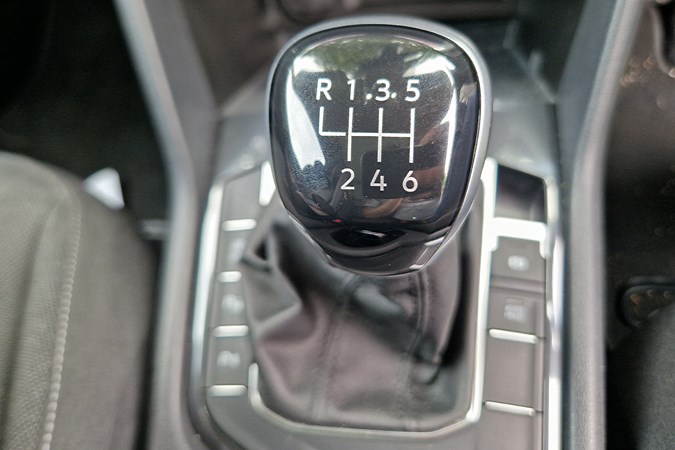
Nit-picking, the gear selection is perhaps too vague and imprecise – I have fluffed a few changes that a more mechanically definite transmission may have made sure. But that’s probably more my fault than the car’s, as for the most part I’ve found it very straightforward to get along with.
Similarly, the front-wheel drive, which is proving to have plenty of traction in these milder months. Greasy winter roads might prove more of a challenge, but I doubt there are many buyers with a genuine need for the 4Motion variants.
The steering, suspension and chassis
This is not a sports car, so it’s got neither pin-sharp steering nor quiveringly taut body control. But on standard, fixed-rate suspension – a telling point for most cars, since this has been definitively signed off with intention, versus the variability the wider parameters of adaptive suspension has to accommodate – it actually drives with real competence.
I can, if I need to, get this Tiguan down a country road very rapidly. Unsurprisingly, it rolls around during fast cornering, but not as much as you might fear and as long as you’re smooth, the Allspace is, too, leaning keenly rather than lurching suddenly. Though the steering is light, the way the car responds still manages to feel connected and authentic, so you don’t find yourself worrying about being caught out by a sudden loss of grip.
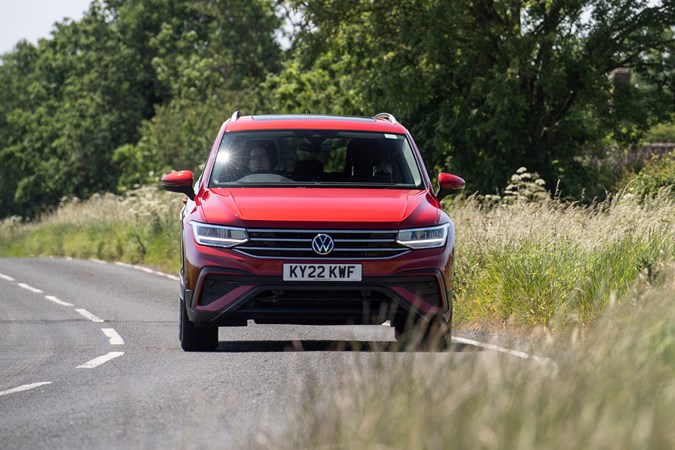
The brakes do everything they need to as well – stopping hard isn’t something required of the Tiguan on a regular basis, but helped by modern electronics and good tyres, it has stepped up whenever necessary. Such as a sudden slow-down on the A1.
So, you… like it?
I don’t think I can go so far as to say it’s exactly what I’d call fun. But it is very well sorted if you’re a dad in a hurry.
And I’m not sure anyone can ask more of a seven-seater SUV than that.
Report 4: Predicting safety is a tricky business
Another VW where not all of the safety systems make sense
So. In the last report I listed all the good stuff about the way the Tiguan Allspace drives. But I also mentioned that there was one glaring exception to this otherwise blot-free copy book.
Take a bow, predictive cruise control.
This, as the name suggests, attempts to take adaptive cruise control a step forward by making it reactive not only to vehicles – and speed limit signs, which has been around a while as intelligent speed assistance with various levels of success – but also the mapping data available via the sat-nav.
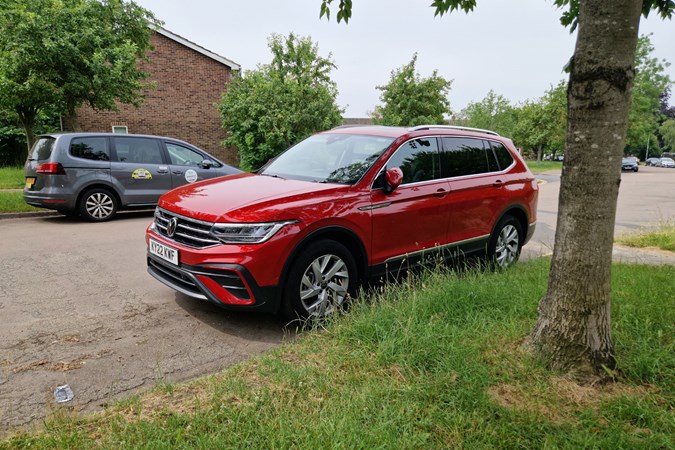
Sounds good, right? The car being clever enough to slow you down for the corner ahead, rather than ploughing you straight on through the barriers because you’ve got the thing set to too high a speed. Well, perhaps if it had been executed with some degree of good sense, then maybe. But even in that case I’d argue the driver should be paying enough attention to avert disaster.
So what’s the problem?
The problem is that when you’re using Google Maps or Waze, it renders the cruise control almost useless. Because on my fairly regular jaunts up the A1, it routinely tries to slow the car down for corners at the end of slip roads I have no intention of taking.
For whatever reason, it doesn’t understand that the primary road is the more likely outcome of the next few hundred yards and errs massively on the side of caution. Just in case I’m about to go straight over a roundabout.
And by massively, I mean it will switch the set speed from 70mph to 23mph (or similar), while I’m driving in the outside lane.
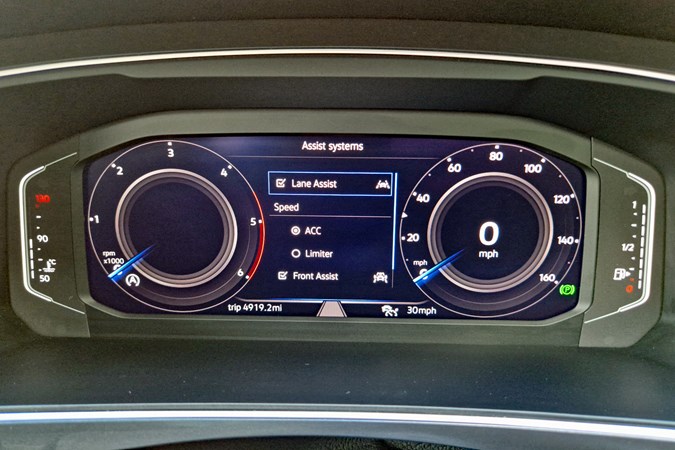
Fortunately – and by fortunately I mean, thank god – it doesn’t make this adjustment by throwing on the anchors. But I’ve become acutely sensitive to any variance in the constant speed that suggests the system is kicking in, so I can usually tell it’s happened even before I catch a glimpse of the message on that appears between the digital dials.
You might argue: what’s the difference between paying attention for that and paying attention so that your non-predictive cruise control doesn’t cause you to run into a corner too fast. And certainly, VW’s material on the subject clearly states ‘The driver must be ready to override the assistance system at all times and is not relieved of his responsibility to drive the vehicle prudently.’
My counter-argument would be that I am already paying attention to the road I’m travelling on. For the system to intervene over the possibility that I might exit that road and take a corner on another road seems utterly bizarre.
Any way around this?
No doubt I could use the car’s built-in navigation, which would give the vehicle certainty of route. But I like the extra hazard features available in Waze and the dynamic route planning available in Google Maps. And the VW media system is aware of the direction these are giving at some level, as although it can’t display the mapping info in the instrument cluster (as it can with the factory sat-nav) it is able to display the name of the road involved in the next navigation instruction.
It’s just a weird, weird state of affairs, and somewhat undermines confidence in the digital engineering. Like my mild concern about the Multivan’s autonomous braking in reverse – which had a habit of slamming the brakes on at the slightest hint of movement behind the car, even while I was reversed in full control – it feels like a system that’s been implemented without being fully thought through.
Here’s the official explanation of the system from VW USA:

Report 5: To The Tank Museum!
No trip to Europe this time, but plenty of opportunities to test the long-distance comfort
The Tiguan has been on plenty of longer journeys while ferrying my family around, and has proven both comfortable and efficient throughout. As discussed, the boot takes a bit of careful packing, but I’m used to that now and it’s rarely a struggle to get everything in; though carrying two child seats and more than two adults remains tricky, we have managed.
What I haven’t had a chance to do during this relatively short – for a long-term test car – loan is take an extended trip into Europe, which is something I do usually try to do. So my mate Keith and I had to settle for visiting The Tank Museum in Bovington, Dorset, this time round instead.

What’s The Tank Museum like?
We’ve unintentionally made a habit of visiting these kinds of exhibition spaces, making it interesting to put the UK’s efforts into perspective versus those in Europe. The Tank Museum is also somewhere I last looked in on in my early teens, so I was curious to see how it had changed over the last *cough* 30 or so years.
And it certainly has. While its location among live tank ranges rang all the right memory bells, my last recollection of the place was of a vast, largely running collection, packed tightly into a serious of unglamourous warehouses. Now it’s a far more modern affair, spaciously laid out and home to an array of different types of exhibits – including areas dedicated to gaming and a live-action arena where the hardy can pay extra for a passenger ride in an APC or similar.

Regardless of the additional roominess, the museum states it’s still ‘the world’s finest collection of tanks’ – not really something I’m qualified to judge but it seemed to compare well with the German tank museum Keith and I visited as part of my Ford Ranger Raptor long-term test. There’s certainly some bloody big things inside, and some intriguing interactive displays as well.
Much to my amusement, there’s even an area dedicated to old-school comic book hero, Sniper Dennison – which might just be Parkers video chief James Dennison’s new nickname.
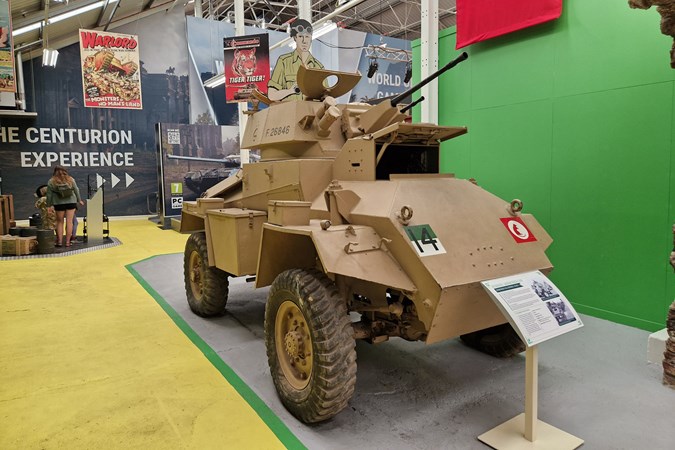
We left the place contemplating a return visit during one of the bigger live action weekenders. Let’s see what 2024 brings.
How about that comfort?
Getting back to the Tiguan Allspace, having set off from a holiday park near Christchurch in Dorset, the drive to The Tank Museum saw it take a selection of different types of road very much in its stride. With Waze on maximum traffic avoidance duty, we found ourselves on some narrow tracks (no pun intended) on occasion, where the SUVs higher seating position made it easier to get the earliest possible view of oncoming motorists.

Keith found it comfortable enough as a passenger, but felt the interior was a little unexciting in comparison to his own VW ID.3; he even got a couple of minor demonstrations of the predictive cruise control issue I highlighted in my previous report. Nothing that would have put us off taking a longer trip into the continent if the opportunity had arisen, but with the Tiguan due home to Volkswagen not long after our return, this definitely isn’t to be.
Report 6: Goodbye to the Tiguan Allspace
Our final report on VW’s seven-seater SUV covers all the pros and cons
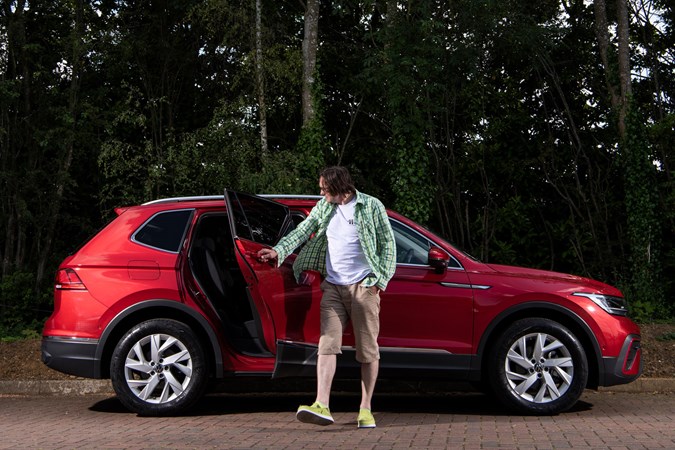
The time has come to say goodbye to the Tiguan Allspace. And I have to say, much to my surprise, I’m rather going to miss it. In the months I’ve been driving this car, my perspective has shifted considerably – away from an initial set of impressions that left me worried it was too compromised to be a proper family vehicle to a concluding opinion that it offers a remarkably well-rounded blend of talents for a modern family holdall.
Talk us through the compromises…
That concern, I think, is summed up entirely by those early pictures of the luggage space with the buggy base in it. The Allspace is a bigger car than the regular Tiguan, so you might expect it to be immediately more practical, but because it also accommodates an extra set of seats, the boot seems too small for belief at first.
We quickly learned how to pack the space efficiently, however, and while we didn’t use the extra row of seats on a regular basis we did use them. And as a means of making it possible to avoid taking a second car on occasion, this is surely an extremely useful feature for a lot of people.
So what won you over?
Making use of its extended practicality features when moving house helped. Not only do all the rear pews fold forward, so does the front passenger seat, creating a cavernous load area that can swallow not only boxes but lengthy items as well.
The kiddos seemed to appreciate the general ride comfort – which was certainly an improvement over the previous VW Multivan – and I came to very much enjoy the sorted nature of the driving experience. The Allspace is not a sporty car, but it handles itself well and can be driven quickly when required. I suspect I would have preferred the DSG automatic transmission that’s available in place of the standard six-speed manual, but that’s a reflection of spending a lot of time sitting in traffic. The manual gearbox is fine.
Any issues along the way?
Well, I managed to take the paint of the edge of the door mirror avoiding a bin lorry – for better or worse, the mirror found itself at exactly the same height as an adjacent railing. Fortunately an easy fix by way of a new mirror cap (or perhaps even a decent polish). Can hardly blame the VW for that.
The infotainment system was a bit flakey. In addition to the well-documented issues surrounding the interface design and its general lack of buttons, there were occasions when the system simply crashed altogether – I’ve experienced this in a number of Volkswagen Group cars that run similar kit recently, so I’m not singling out the Tiguan (or the VW brand) here. On the plus side, it always recovers very quickly.
I’ve also gone into the predictive cruise control in some detail above. This is not a well-resolved piece of technology, in my humble opinion.
What did it cost to run?
Even when trapped in suburban hell, pootling between school and nursery, the Tiguan’s 150hp 2.0-litre TDI turbodiesel only ever dropped below a real-world 42mpg over the course of one tank. For the most part it returned high 40s, and on tanks involving longer motorway runs I was seeing over 52mpg. Which is remarkably close to the official 53.3mpg.
Aside from the mirror damage there weren’t any other costs aside from the fuel. I don’t even remember having to put any AdBlue in it – which is a result over 10,000 miles of varied driving.
Would you buy one?
While my own personal quest for the perfect family car continues, this experience with the Tiguan Allspace has made it a very easy vehicle to recommend. An honest, enjoyable driving experience coupled with a flexible interior should make it a companion worth considering for a lot of family buyers. The fuel economy from this entry-level 2.0-litre diesel is surely an attractive asset here as well.
My problem is that I think I’d rather have more boot space than more seats, and I’m not sure I see the necessity of driving an SUV. Time, perhaps, for an even more conventional family car choice.
More generally, the Tiguan Allspace is far from unique in its relatively compact seven-seater SUV offering, so there are plenty of comparisons to make when shopping for this kind of machine. And while I like it a lot, if I were buying I’d certainly be considering alternatives with better infotainment and less intrusive safety systems before committing to the deposit.
| VW Tiguan Allspace Life 2.0-litre TDI 150 | |
|---|---|
| Final mileage | 10,280 |
| Real-world average fuel economy | 46.3mpg (over entire test) |
| Official combined fuel economy (WLTP) | 53.3mpg |
| Parkers miles per pound calculation (mpp) | 6.3-6.8 |
| Car on Parkers fleet | April-October 2023 |


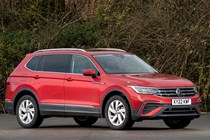
.jpg)
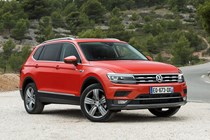
.jpg)
.jpg)
.jpg)

.jpg)
.jpg)
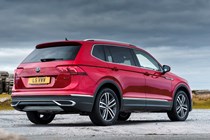
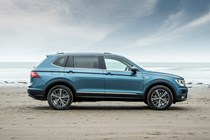
.jpg)
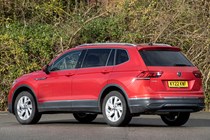
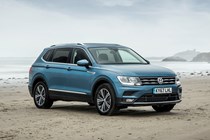
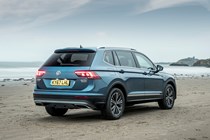
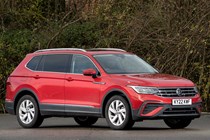
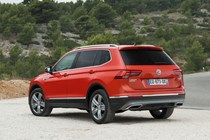

.jpg)
.jpg)
.jpg)
.jpg)
.jpg)
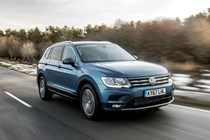
.jpg)
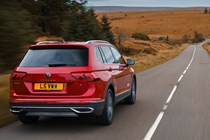
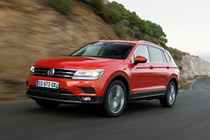
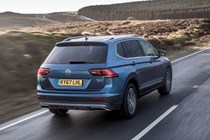

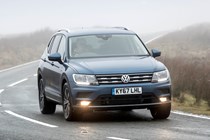
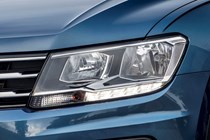
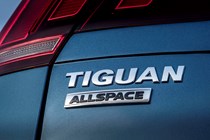
.jpg)
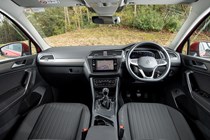
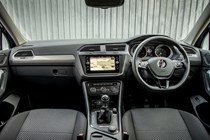
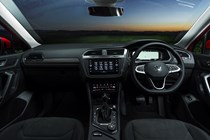


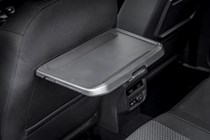
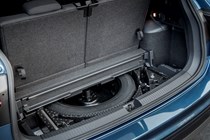
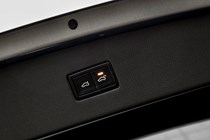
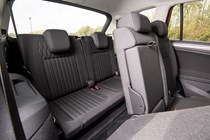

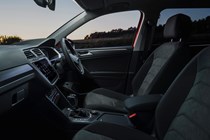
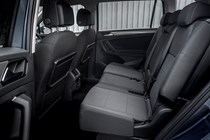


.jpg)
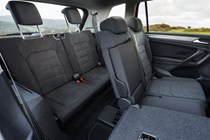
.jpg)
.jpg)
.jpg)
.jpg)
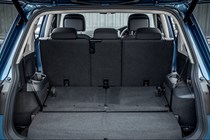
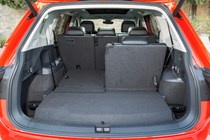
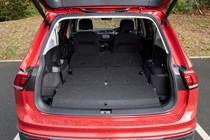
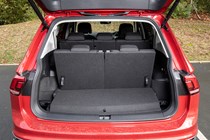
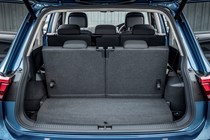

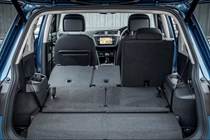
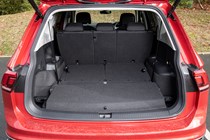
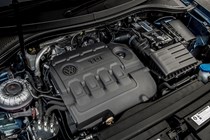

.jpg?quality=50)

.jpg?quality=50)
.jpg?quality=50)
.jpg?quality=50)

.jpg?quality=50)
.jpg?quality=50)


.jpg?quality=50)






.jpg?quality=50)
.jpg?quality=50)
.jpg?quality=50)
.jpg?quality=50)
.jpg?quality=50)

.jpg?quality=50)







.jpg?quality=50)














.jpg?quality=50)

.jpg?quality=50)
.jpg?quality=50)
.jpg?quality=50)
.jpg?quality=50)








